Google Pixel Slate review: is this high-end tablet a winner?
T3's official Google Pixel Slate review lands. Find out if it is the right system for you now

The Pixel Slate is a solid system, but fails to shine over any of its direct competition.
-
+
A superb screen
-
+
Good build quality
-
+
Expandable and versatile
-
-
Performance issues on review
-
-
Very expensive
Why you can trust T3
Welcome to T3's Pixel Slate review. We've spent weeks evaluating every aspect of Google's new slate and here we deliver our official verdict.
And, right of the bat, the Pixel Slate makes us feel all existential. What is this? Who is it for? It’s not a tool to revive the messy Android tablet market – it supports Android apps, but it’s a Chrome OS device, running an upgraded but very similar operating system to the Pixelbook which came before it, and toting Intel hardware inside.
It’s not, at least as a whole, a hardware showcase – its screen is spectacular, and it carries a premium feel, but a glance at the internal specs raises eyebrows when they’re compared to the asking price at each level.
Google Pixel Slate review: availability, hardware and screen
What it is, or at least what it appears to be, is Google’s stab at joining the market niche that Microsoft has been busy carving out with the tablet branch of its Surface line, translated via the company’s own predominantly online computing lens. It’s a Chromebook in a tablet form factor, turbocharged and spiced up, something for work and for play, but not necessarily something which is going to replace either a dedicated tablet or a full-blown PC. And Google really has got a lot of things right – but there’s a lot lacking, too.
Our review model is the £969 Intel Core i5 edition, sporting a not-unreasonable 128GB of storage and 8GB RAM; you can go as low as the £549 model, which implements a wholly-inadequate Intel Celeron and a paltry 4GB RAM, or splash out on the extravagant Core i7, 16GB RAM edition at a rather hopeful £1,549. Once you’ve taken the nigh-essential Pixel Slate Keyboard into account (another £189) and considered the non-essential but somewhat transformative Pixelbook Pen (£99), that’s a very large investment.
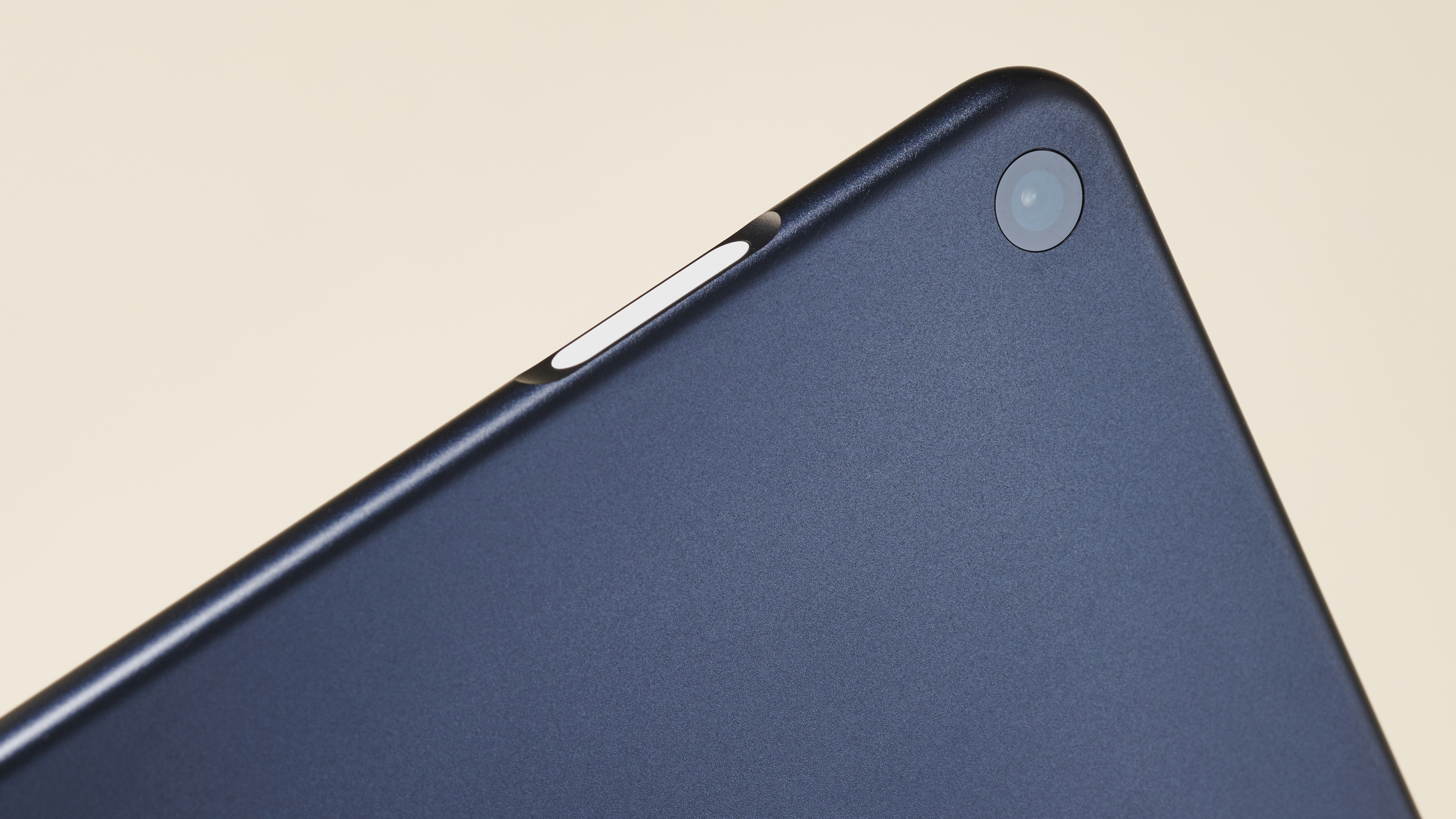
So what do you get for your money? Most prominently, and arguably most essentially for a quality tablet, there’s the screen. It’s been branded the Molecular Display, and when a standard component is given a grandiose name of its own you know you’re in for something special. You are: the Surface Book-matching 3000x2000 panel, squashing 293 pixels per inch into its 12.3-inch area, does not disappoint even slightly. It’s vibrant without being over saturated, and absolutely razor-sharp when static.
The panel also won us over when run through our suite of monitor tests, with a fairly impressive response rate that leads to smooth scrolling (though, spoiler, that’s not always the case) and some highly impressive colour separation and consistency. There screen is impressive even up against the impeccable Retina display of the iPad Pro. But it’s also the reason we called the Celeron processor in the lower editions inadequate – asking a low-end processor to deal with shifting six million pixels every frame, as well as everything else it has to do, is quite the request.
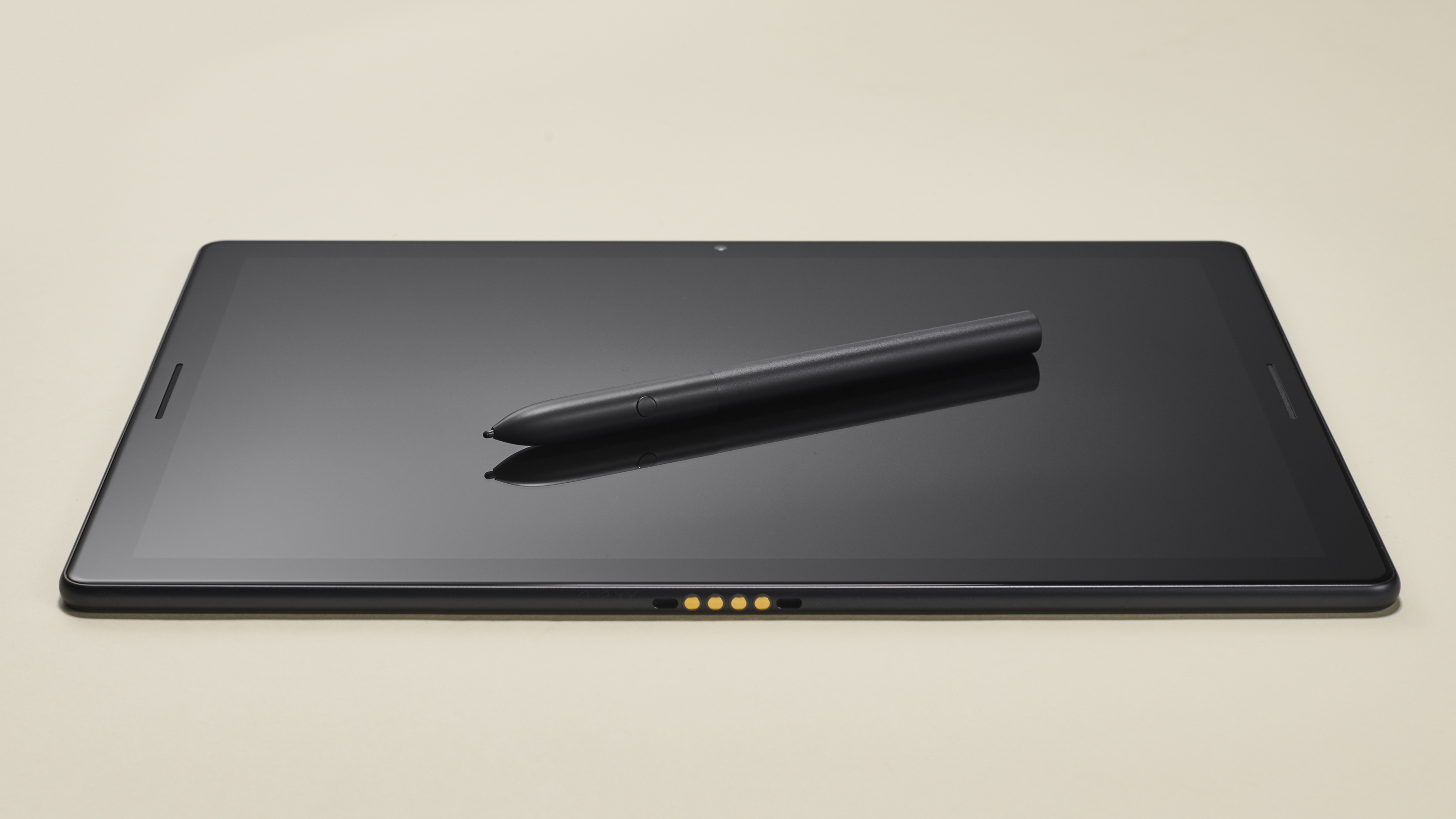
Next to the screen, a pair of immensely capable front-firing speakers provide stereo sound when the Slate is used in its usual landscape configuration. These are loud, and they are supremely staged, with an output range that reaches impressively high and low without the hollow sound that mobile devices usually suffer from. Another tick in the win column, and moving further, the very edges of the case, marks a few more.
There is a pair of USB-C ports, one on each edge, meaning you can charge the Slate and expand it at the same time. Unlike the iPad Pro, you can extend the Slate with external mice (and keyboards) as well as additional storage, which is a handy feature. The power button, recessed into the top edge of the aluminium shell, doubles as a fingerprint reader. There’s an 8MP rear camera, and a same-res front-facing camera with a wide FOV, which is actually pretty great. Notable by its absence is a headphone jack, though Google does supply a USB 3 adapter in the box. Battery life, in our testing, was strong, easily lasting a day of heavy use.
Google Pixel Slate review: keyboard
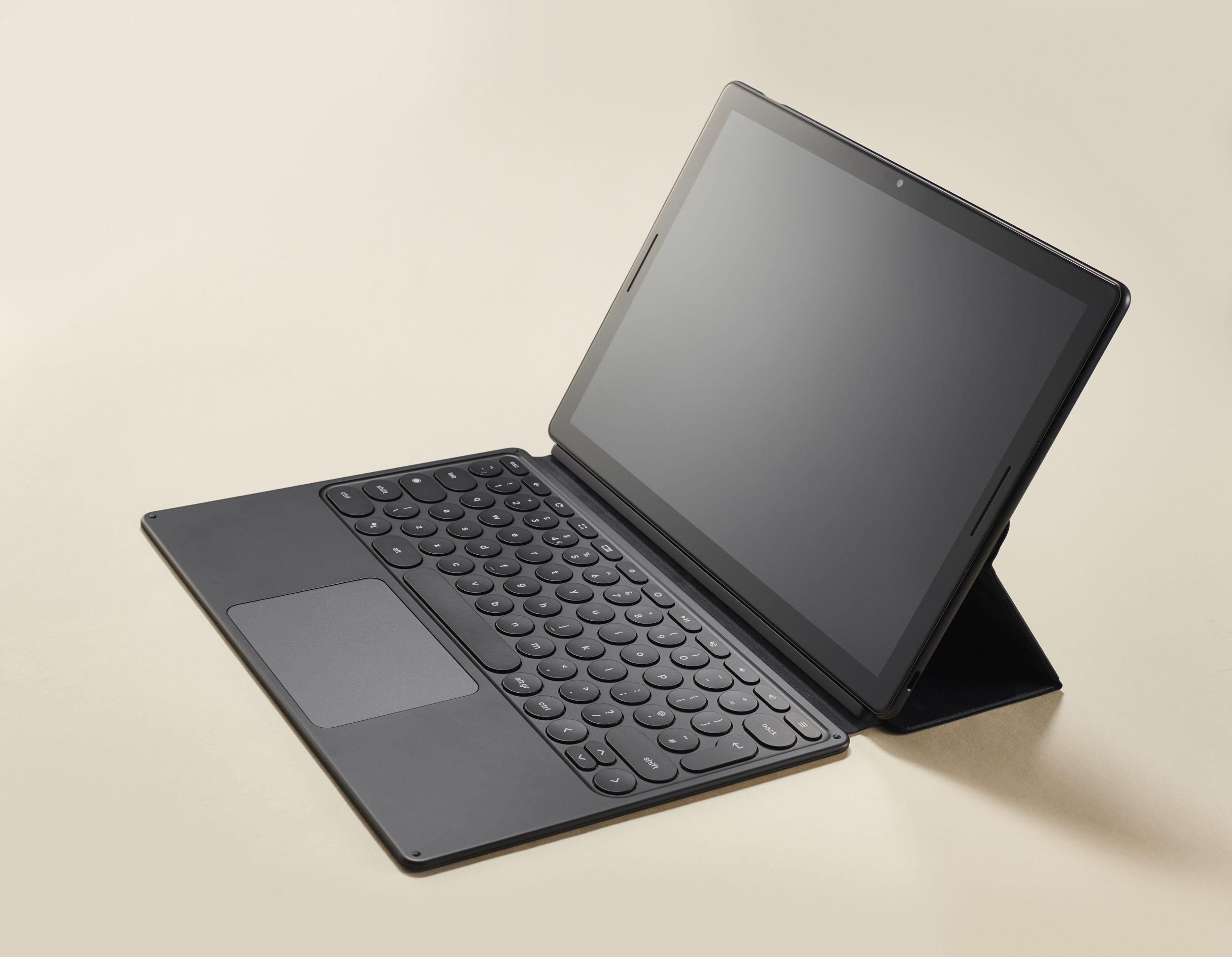
For the main hardware, that’s about the end of the visual list, but if you’re going to get the most out of the Pixel Slate you’ll absolutely want to pick up its keyboard add-on (or one like it) to make the tablet/laptop hybrid package complete. This is frustratingly important since, without it, there’s no built-in prop to stand the Slate up on a desk.
The hilariously expensive Pixel Slate Keyboard is, and let’s not skirt around it, a huge disappointment. Let us count the ways: its circular keys are cute but feel horrible under the fingers; its plastic base flexes if you so much as look at it, and flexing it too much causes errant clicks on the trackpad; it is clad in a concoction of rubbery silicon that shouldn’t be anywhere near a premium device; and, worst of all, its magnets aren’t quite up to the task.
Google Pixel Slate review: cover, software and pen
While the back cover does bend into a viable folding prop, holding the screen firmly enough at whatever precise angle you need it, the whole arrangement flops about disconcertingly when it’s closed over the Slate. We wouldn’t trust it in a bag, and an ill-fitting cover is just bad in the hand, particularly when Apple and Microsoft don’t seem to have had any problems securing their own magnetic protectors.
And so to the software. Chrome OS is a darn sight better than it once was. It has grown from a feature-thin way of running a web browser into a slick operating system in its own right, and it’s a solid base for the Pixel Slate. It’s compatible with the entire Android retinue, Google’s extensive web app selection and, naturally, you can use everyone else’s web apps too. If there’s something you need to get done, you can do it. If you’re brave, you can even exploit the Linux base of Chrome OS to extend it even further, but we’d imagine nobody is buying a Pixel Slate for that feature alone.
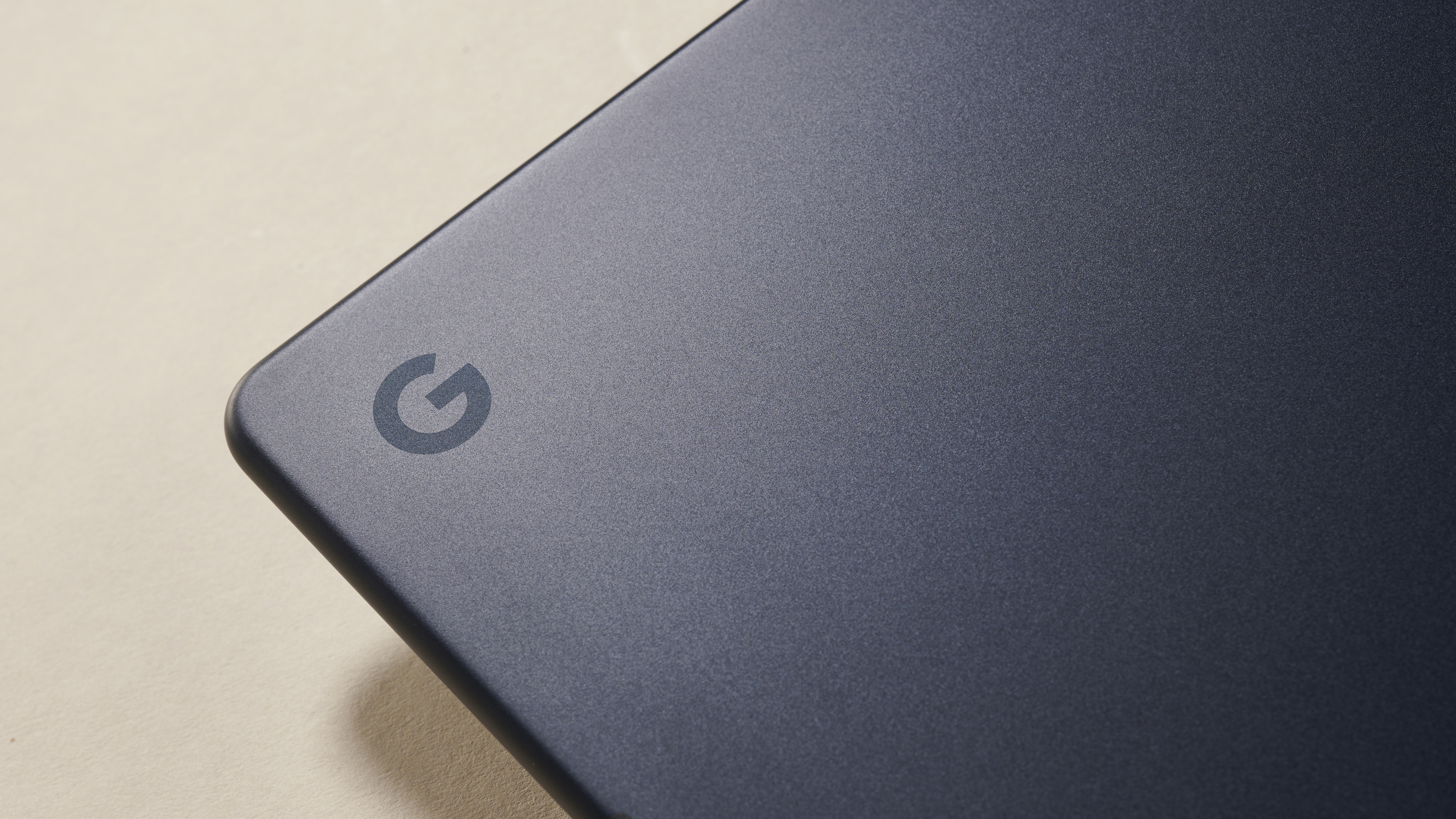
The UI works as well in tablet and desktop configurations, which is to say it doesn’t entirely impress in either. As a user interface, it’s fine. Even without the physical buttons of the keyboard it’s easy to find your way around, and hooking up external peripherals triggers a seamless transition into a perfectly useable desktop mode. Our Core i5 model wakes in an instant from standby, and it handles multitasking, tons of open tasks and split-screen applications with ease. There’s none of the fiddly complexity of Windows’ not-quite-properly-formed Tablet Mode, and none of the almost cartoonish simplicity sometimes displayed by iOS. Once again, this straddles the two pillars of the tablet world, and does so with aplomb.
But there’s a problem: lag. Even on the Core i5 model we tested, there’s a significant amount of jitter when scrolling, and a slightly syrupy laziness when drawing with the Pixelbook Pen or dragging with a finger. In a world where Apple’s iPad Pro exists – and, for that matter, in a world where many devices way below that on the ladder can manage a slick interface – this small delay translates into a big let down. Perhaps it’s something that can be fixed in future iterations of the software; the screen’s touch tech is, in theory, perfectly up to scratch, and it interacts perfectly with tilt and pressure placed on the Pixelbook Pen, at least beyond that slight lag. We’re honestly not sure what went wrong. Whatever it was, it’s a shame it’s happened.
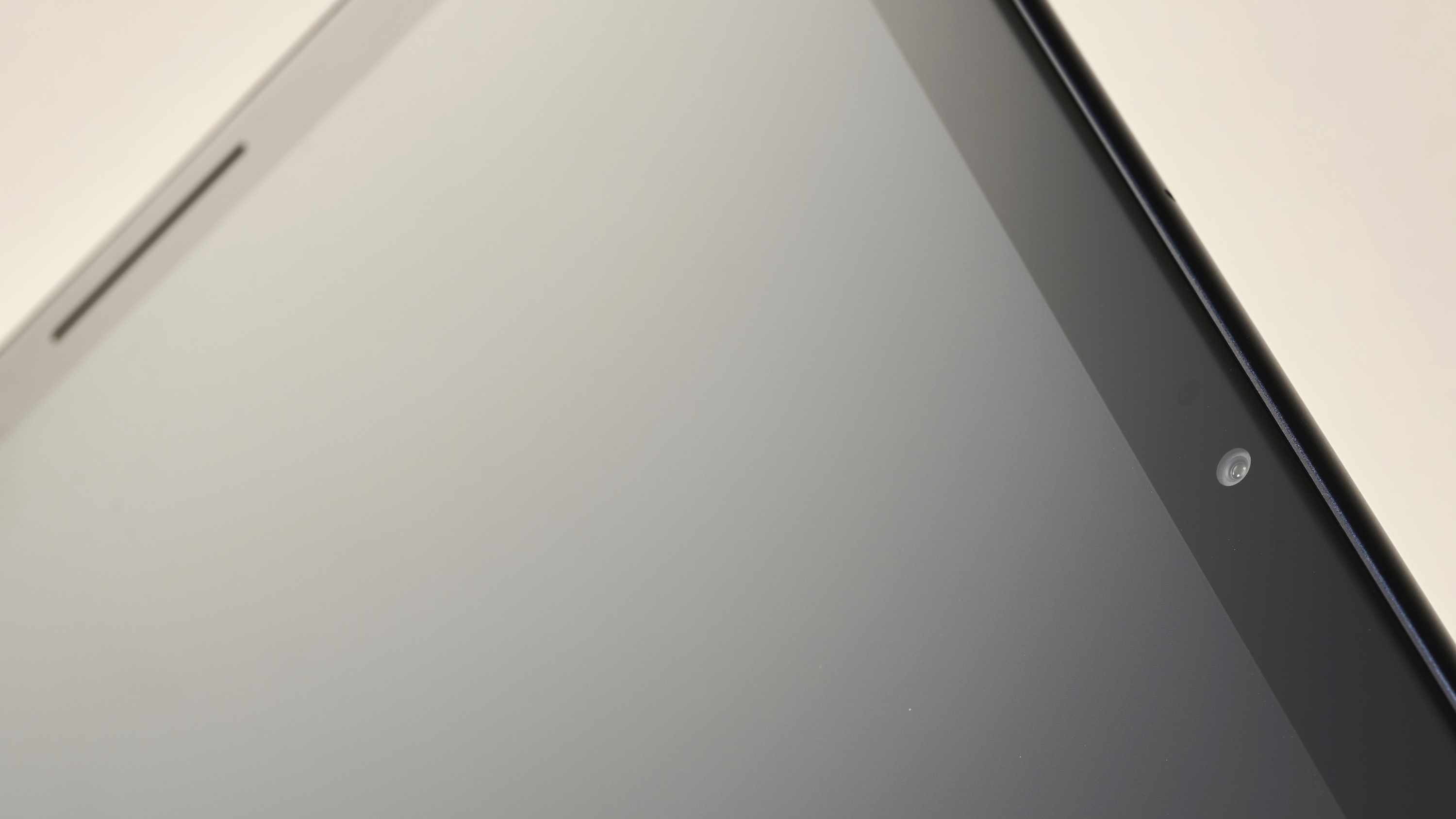
It might seem like we’re down on the Pixel Slate. Really, as a piece of hardware, we’re not: it is a mostly brilliant tablet, beautifully built and impressive to look at, but one whose rough edges are directly opposed to its premium price. Even after weeks with it we haven’t been able to conclusively answer those questions we asked at the start. We don’t know who it’s for - it lands, as we suspect was intended, in a middle ground between work and play, but it doesn’t necessarily have the right level of fit and finish to appeal to the business market or the right price point to make it an essential sofa companion.
Google Pixel Slate review: verdict
There are better options in the form factor either side, the peerless iPad Pro and Surface Pro 6 on one, the far cheaper 9.7-inch iPad and Surface Go on the other.
The Pixel Slate only really makes sense as an evolution of Google’s own-brand high-end Chromebook line. In that context, it’s a fine successor to the convertible Pixelbook, although that too nestles in a confusing niche given that virtually every other Chrome OS device is both lower power and lower cost. The dream of a joint Android tablet and serious laptop is worthy, but not fully realised here.
Sign up to the T3 newsletter for smarter living straight to your inbox
Get all the latest news, reviews, deals and buying guides on gorgeous tech, home and active products from the T3 experts
T3 magazine's own Gadget Guru is a 25-year veteran of the tech writing wars, and has the scars to prove it. He's written for the UK's biggest technology publications, and knows everything from smart doorbell voltage needs to how to bend Windows to his every whim.
-
 Warning: Ciele’s refreshed Elite Collection may cause excessive garment envy on race day
Warning: Ciele’s refreshed Elite Collection may cause excessive garment envy on race dayFlex on your run crew with Ciele’s latest drop
By Matt Kollat Published
-
 Smeg adds a touch of navy sophistication to its iconic breakfast set
Smeg adds a touch of navy sophistication to its iconic breakfast setIt's a minimalist's dream
By Lizzie Wilmot Published
-
 My most anticipated Netflix movie of the year gets a wild new trailer
My most anticipated Netflix movie of the year gets a wild new trailerHavoc looks pretty unbelievable
By Max Freeman-Mills Published
